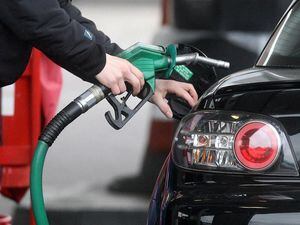Just how smart can the four-lane motorway be?
Radar technology is the latest tool being used in an effort to convince us that smart motorways are safe.

No new smart motorways without a hard shoulder will open in England unless the devices to detect broken-down vehicles is installed, Highways England has announced.
The Government-owned company also said retrofitting the Stopped Vehicle Detection (SVD) system to the existing network will be accelerated by six months.
An action plan launched by Transport Secretary Grant Shapps in March 2020 included a deadline of rolling out SVD across the entire network by March 2023, but this will now be completed by September next year.
There is growing concern over all lane running (ALR) smart motorways, which involves the hard shoulder being converted into a running lane, due to several fatal accidents involving stationary vehicles being hit from behind.
The system is now very much part of travel in the West Midlands, with it either in place or being installed on the likes of the M5, M6 and M42.
Fatal accidents
One fatal accident happened on the M6 in 2016, when Anthony Marston, of Leegomery, Telford, stopped his Mercedes E300 estate, which was towing a trailer loaded with a Peugeot Partner van, between junctions 10 for Wolverhampton and 10a for the M54. He had no hard shoulder to pull onto. A Scania R450 lorry being driven by Michael Preston smashed into the trailer and Mr Marston was caught between it and his Mercedes. He suffered multiple severe injuries from which he died. Preston was later jailed for 32 months for causing death by dangerous driving.
Despite serious accidents, Highways England insists smart motorways are “the safest roads in the country”, stating the number of fatalities per distance driven is a third higher on conventional motorways than ALR motorways.
It said 15 people were killed on motorways without a permanent hard shoulder in 2019, up from 11 in 2018.
Mr Shapps said: “Despite the data showing that fatalities are less likely on All Lane Running motorways than on conventional ones, this doesn’t mean all drivers necessarily feel safe on them.
“That is why I tasked Highways England last year with delivering an action plan to raise the bar on safety measures even higher. This progress report shows the extensive work already carried out, but we want to do more.”
Highways England’s acting chief executive Nick Harris said: “We’ve made good progress delivering the improvements set out in the 2020 stocktake, but we are not complacent and are examining ways to improve safety further.”
Here are some of the key issues on the subject of smart motorways.
What are smart motorways?
They use technology to improve the flow of traffic, including using the hard shoulder as a live running lane and variable speed limits.
How many are there?
There are 375 miles of smart motorways, of which 140 miles retain a permanent hard shoulder. Motorways with sections where the hard shoulder has been removed are on the M1, M5, M6, M23, M25 and M62.
What are the benefits?
They are designed to increase capacity without the more disruptive and costly process of widening carriageways.
Why are there safety concerns?
Concerns have been raised about incidents where vehicles stopped in traffic and were hit from behind. Fourteen people were killed in 2019 on motorways where the hard shoulder was permanently removed or was temporarily used as a live running lane, according to analysis. Jason Mercer, 44, and Alexandru Murgeanu, 22, died on the M1 in South Yorkshire in June of that year after a lorry ploughed into their stationary vehicles.
What does the Government say about smart motorways?
An “evidence stocktake” published by Transport Secretary Grant Shapps in March 2020 said that “in most ways” they were as safe or safer than conventional motorways, but the chance of a crash involving a moving vehicle and a stationary vehicle was higher when the hard shoulder was removed. An 18-point action plan was formulated, including installing more places to stop in an emergency and faster rollout of a radar-based system to detect broken-down vehicles.
What happens if I break down on a smart motorway without a hard shoulder?
Drivers are advised to take the next exit or pull into an emergency refuge area (ERA) if possible. Emergency areas, motorway service areas or hard shoulders were initially up to 2.5km (1.6 miles) apart, but for new smart motorways being designed they will be no more than 1.6km (one mile) apart. If you come to a standstill in a live lane and cannot get to a refuge, you are told to switch on your hazard warning lights and stay in your vehicle with your seat belt on and to call 999. Once Highways England is alerted to a stopped vehicle in a live lane, overhead gantries will display a red X to indicate the lane is closed.
Are smart motorways used in other European countries?
The vast majority of motorway-style roads in Europe have a permanent emergency lane.
What do drivers think about them?
An AA poll of 15,000 motorists suggested only one in 10 drivers felt safer on smart motorways without a hard shoulder than traditional motorways.





